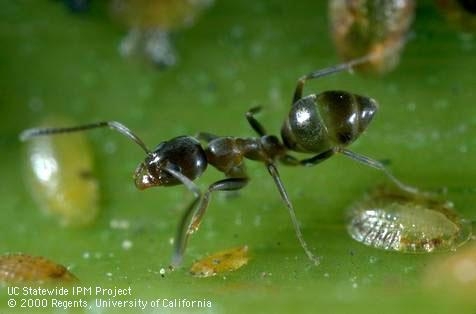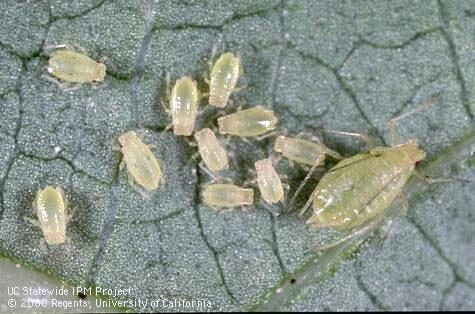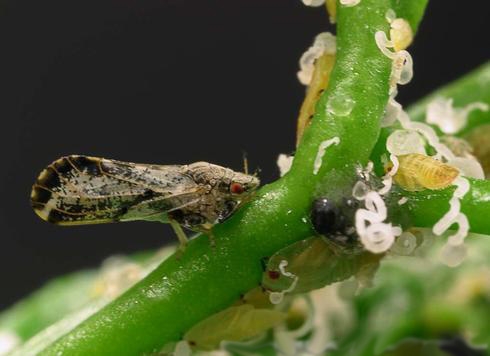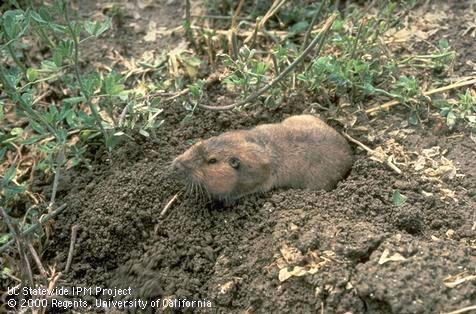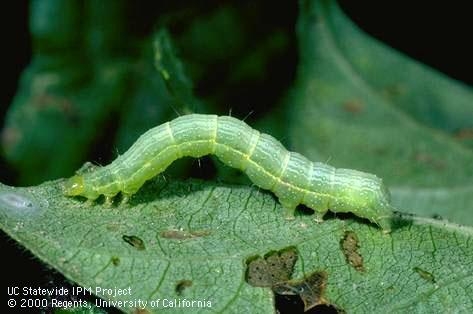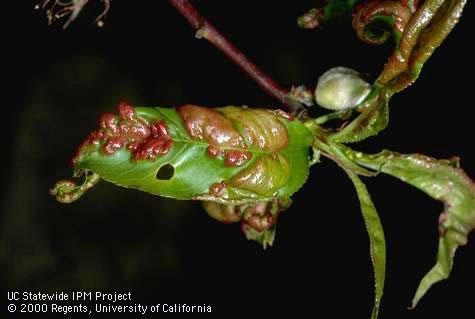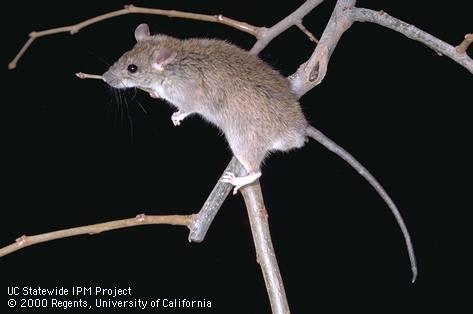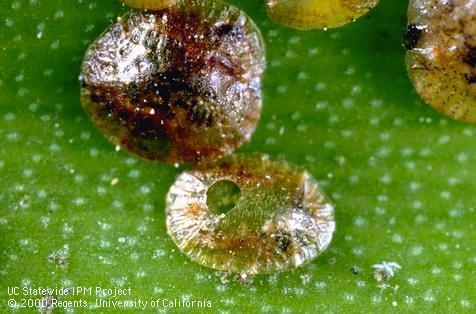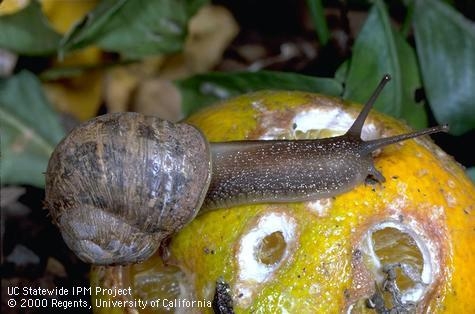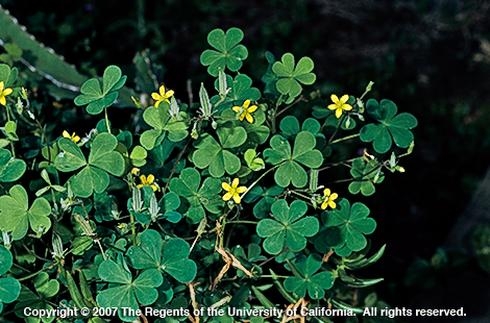Posts Tagged: weed
Top 10 pests in gardens and landscapes and how to control them
Download the free booklet at the bottom of the page!
1. Ants
Most people deal with ants around their home at some point. Because most ants live outdoors, focus efforts on keeping ants from entering buildings by caulking entryways. Follow good sanitation practices to make your home less attractive to ants. Spraying ants inside the home will not prevent more ants from entering. Use baits to control the ant colony. Pesticide baits work by attracting worker ants who then take the poison back to the nest where the entire colony, including queens, can be killed. In the landscape, ants protect honeydew-producing pest insects from predators, so use sticky barriers or insecticide baits to keep ants out of trees and shrubs.
- Find out more at http://www.ipm.ucanr.edu/QT/antscard.html
2. Aphids
Aphids can curl leaves and produce sticky honeydew, but they rarely kill plants and you usually can wash them off with water. When aphid numbers get high, natural enemies such as lady beetles (lady bugs), lacewings, syrphid fly larvae, soldier beetles and others frequently feed on them, eliminating the need for pesticides. Protect these good bugs by avoiding the use of insecticides that can be toxic to a broad variety of insects. Ants protect aphids from these natural enemies, so keep ants away from your garden as well. When pesticides are necessary, use less toxic products such as insecticidal soaps and oils.
- Learn more about controlling aphids here: http://www.ipm.ucanr.edu/QT/aphidscard.html
3. Asian citrus psyllid and Huanglongbing disease
The Asian citrus psyllid (ACP) and the deadly bacterial disease it spreads, Huanglongbing (HLB), threaten citrus trees in backyards and on farms. There is no cure or effective control method for HLB disease. All types of citrus—including oranges, grapefruit, lemons, and mandarins—are affected as well as a few closely related ornamentals. ACP and HLB have already devastated the Florida citrus industry, and now that it is in the Western U.S. it is threatening the California citrus industry as well.
- See where the outbreaks are in California with our helpful Asian citrus psyllid website: http://ucanr.edu/sites/ACP/Distribution_of_ACP_in_California/
- Contact your agricultural commissioner's office, or call the California Department of Food and Agriculture (CDFA) Exotic Pest Hotline at 1-800-491-1899 to confirm a find. Learn more about ACP here: http://www.ipm.ucanr.edu/QT/asiancitruscard.html
4. Gophers
Gophers are small burrowing rodents that feed on roots of many types of plants. A single gopher can ruin a garden in a short time, and gopher gnawing can damage irrigation lines and sprinkler systems. In lawns, their mounds are unsightly and interfere with mowing. Early detection is critical to prevent damage. Use both traps and underground fencing to manage gopher problems. Toxic baits are available but can pose threats to wildlife, pets, and children, especially in backyard situations.
- Learn more about protecting your garden and landscape from gophers here: http://www.ipm.ucanr.edu/QT/gopherscard.html
5. Leaf-feeding caterpillars
Caterpillars, which are the larvae of butterflies and moths, damage plants by chewing on leaves, flowers, shoots, and fruit. Caterpillars in fruit or wood can be difficult to manage because they are hidden most of their life and can cause serious damage even when numbers are low. However, many plants, especially perennials, can tolerate substantial leaf damage, so a few leaf-feeding caterpillars often aren't a concern. Handpicking and beneficial predators and parasites often provide sufficient control. Look for feeding holes, excrement, webbed or rolled leaves, caterpillars, eggs, and good bugs.
- Learn more here:http://www.ipm.ucanr.edu/QT/lfcaterpillarscard.html
6. Peach leaf curl
Peach leaf curl is a fungal disease that affects only peach and nectarine trees. Distorted, reddened foliage in the spring is a distinctive symptom. New leaves and shoots thicken and pucker and later may die and fall off. An infection that continues untreated for several years can lead to a tree's decline. To prevent peach leaf curl, treat peach and nectarine trees with a copper fungicide every year after leaves fall. After symptoms appear in the spring, any treatment will not be effective. When planting new trees, consider buying peach tree varieties that are resistant to the disease.
- To learn more about preventing peach leaf curl click here: http://www.ipm.ucanr.edu/QT/peachleafcurlcard.html
7. Rats
Rats eat and contaminate food, garden produce, and fruit, and transmit diseases to humans and pets. Manage rats by removing food and shelter, eliminating entryways into buildings, and trapping. Snap traps are the safest, most effective, and most economical way to trap rats. For Norway rats, place traps close to walls, behind objects, in dark corners, and in places where you have found rat droppings. For roof rats, place traps in off-the-ground locations such as ledges, shelves, branches, fences, pipes, or overhead beams. Ensure traps are out of reach of children and pets.
- Learn more about preventing and controlling rats here: http://www.ipm.ucanr.edu/QT/ratscard.html
8. Scales
Scale insects suck plant juices and are pests of many trees and shrubs. Infestations can cause yellowing or premature dropping of leaves, sticky honeydew, and blackish sooty mold. Plant parts can distort or die back, depending on the species and abundance of scales. Most plants tolerate low to moderate numbers of scales. Provide plants with proper cultural care, especially irrigation. Encourage scale predators such as lady beetles or lacewings and look for parasite emergence holes in scale covers. Use sticky barriers or insecticide baits to selectively control scale-tending ants. Consider replacing problem-prone plants because most scales are highly specific to certain plants.
- Learn more about controlling scale populations here: http://www.ipm.ucanr.edu/QT/scalescard.html
9. Snails and slugs
These slimy mollusks emerge from hiding at night and chew holes in leaves and flowers of many succulent garden plants and fruit. Management requires a vigilant and integrated approach that includes eliminating moisture and hiding spots, trapping, setting up barriers, and handpicking. Regularly remove snails from shelters you can't eliminate such as low ledges on fences, undersides of decks, and meter boxes. Place traps in your garden and dispose of trapped snails and slugs daily. Reduce moist surfaces by switching to drip irrigation or watering in the morning rather than later in the day. Consider snail-proof plants such as impatiens, geraniums, begonias, lantana, nasturtiums, and many plants with stiff leaves and highly scented foliage such as sage, rosemary, and lavender.
- Learn more about controlling snails and slugs with and without pesticides in your garden here: http://www.ipm.ucanr.edu/QT/snailsslugscard.html
10. Weeds in landscapes
Prevent weed invasions in new beds with good site preparation. Keep weeds out with an integrated program that includes competitive plants, mulches, and hand removal. Be particularly vigilant about removing aggressive perennial weeds. You rarely should need herbicides in established landscape plantings. Mulches prevent weed seed germination by blocking sunlight. Remove small weeds by hand before they flower and set seed. Use shallow cultivation or hoeing to remove annual weeds from ornamental plantings. Only use herbicides for special-problem situations before establishing new plantings or for difficult-to-control perennial weeds.
- Learn more about controlling weeds in your landscape here: http://www.ipm.ucanr.edu/QT/landscapeweedscard.html
To see all of the University of California's Statewide Integrated Pest Management Program's information on home, garden, and landscape pests, visit http://www.ipm.ucanr.edu/PMG/menu.homegarden.html
For other short pest “Quick Tips” like the ten above, see http://www.ipm.ucanr.edu/QT/
To read even more in-depth, peer-reviewed information on many other common home and landscape pests in California, see the Pest Notes series at http://www.ipm.ucanr.edu/PMG/PESTNOTES/index.html
Download your free UC IPM Quick Tips Booklet of the Top Ten Pests in Gardens and Landscapes and How to Control Them with the link below!
The Buzz About Honey Bees and Marijuana
Extension apiculturist emeritus Eric Mussen of the UC Davis Department of Entomology and Nematology, "retired" in June of 2014 after 38 years of...
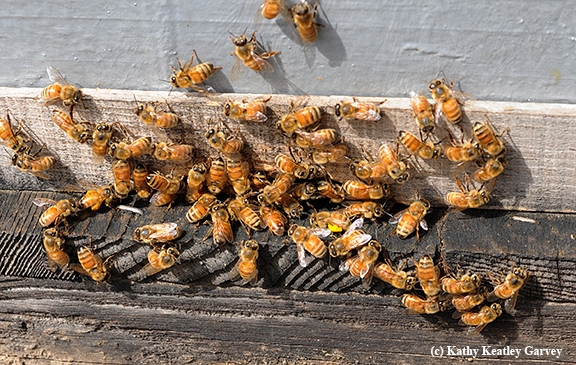
Honey bees laden with pollen returning to their colony. (Photo by Kathy Keatley Garvey)
My Foe-Bermudagrass!
I’m fighting – and losing at this point – with Bermudagrass (Cynodan dactylon). Have you ever had a gardening problem, be it a weed or much-loved plant which fails to thrive, which has you thinking that TNT might be a good herbicide? I have but I’ve decided that explosives might be frowned upon during an IPM discussion.
My foe came into my yard courtesy of my neighbor. Evidently, at one time, they had a lawn in the backyard which extended from the house to the back fence and almost as wide as the entire yard. I never had any stolons come creeping into my yard UNTIL they had a concrete contractor come to install a patio. Well, very soon after that, came little fingers of green from under the fence and into my side yard. Eek, a mouse, er I mean Bermudagrass!
Realizing that since I left to work at 4:30 a.m. and returned around 5pm, I had no time for this “little” green invasion, I put the other adult at home to work (or so I thought). My plan was for Bruce to use the spray bottle of herbicide on the grass slowly creeping toward my roses, but he thought the plan was to merely report the progress the grass was making! Pretty soon, it seemed like only mere minutes, my yard had disappeared under a sea of thick stems and fine leaves. What to do?
Since the day I discovered that “his” plan was not “my plan”, we have been preparing to do battle! Since merely pulling the long, knotty and rather strong strands of grass is not working and our backs are tired; we have gone directly to the last step of IPM and selected our chemical allies.
This process was rather easy since reading the labels on the containers (the 1st step) eliminated a number of products right off the bat. Using gyphosate will not do as it is a non- selective weed-killer and kills grasses as well as broadleaf plants. That left only the selective dicot (grasses) herbicides. By looking around, reading labels, and asking professionals for suggestions, we are using a product whose main ingredient is fluazifop which can be sprayed over the top of roses, daylilies, and other plants which are in my yard. Hopefully next year my acreage of Bermudagrass will be smaller and what I planted will be visible. That will be extremely satisfying to Bruce and me!
All in all, I guess I should be happy that my neighbors didn’t plant either “running” bamboo or horsetail reeds!
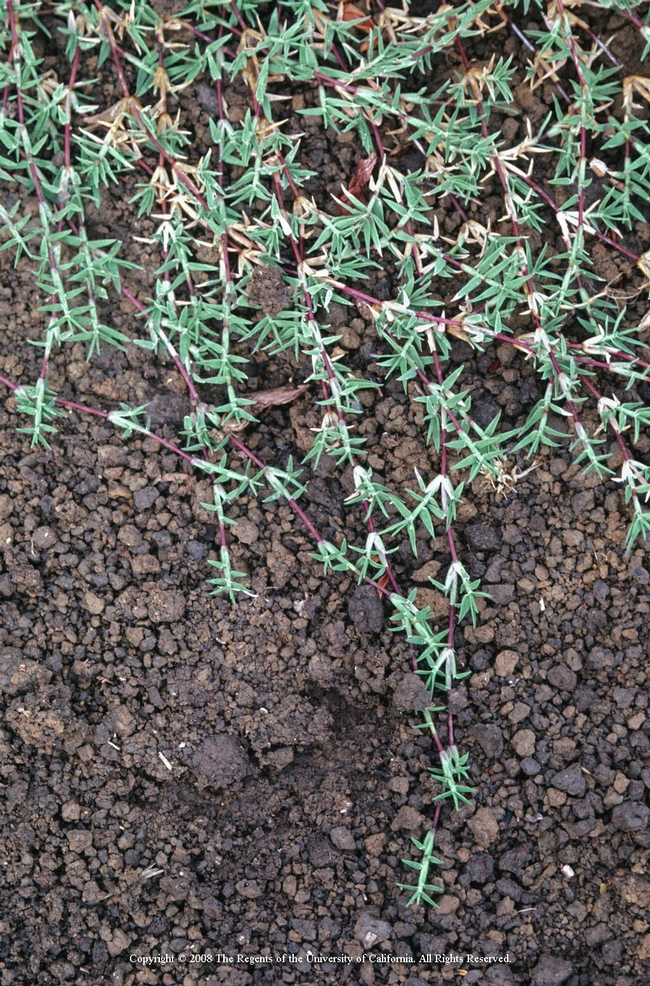
Mat of bermudagrass.
Bunny Tails Ornamental Grass
Several years ago, Karen Metz, brought two Bunny Tails plants (Lagurus ovatus) to the Children’s Garden. She thought they would not only be interesting and fun to have at the garden, but something the children would enjoy touching. If you are not familiar with these small, compact grasses, just picture white, fluffy rabbit tails on a stem. Adorable!
In researching the information on this plant, it states it’s an excellent border plant and suggests planting it along walkways so it will tickle your legs as you walk pass. It’s drought tolerant once established. You can also grow Bunny Tails in containers as an accent plant. Blooms are 1 to 2 inches wide and the plant grows one to two feet tall. In the fall, the fluffy white tails turn tan and can be cut to add to dry flower arrangements.
Two years ago, it was suspected that a groundsman sprayed one of our Bunny tails with an herbicide. They do look similar to a weed when they are “tail-less”. Our remedy for the next one we planted was to place a small cage around it with a stake that denoted it was a PLANT and not a WEED. Well, the Bunny Tail grasses are not surviving in the little garden, despite our best efforts. I have decided they are not an easy grass to propagate or grow in an area you cannot keep under constant observation.
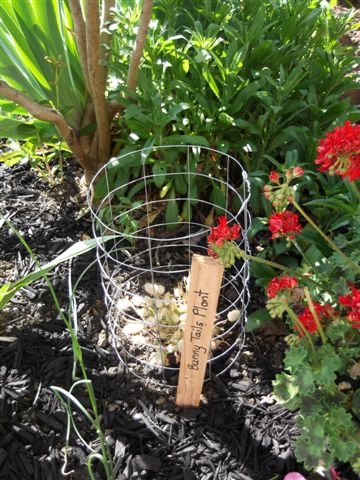
Bunny tails under guard. (photo by Sharon Rico)
Gardening Activities for You
When it comes to gardening, there is always something new or something more to learn. Luckily there are many opportunities nearby to expand your gardening knowledge. Below is a sample of some upcoming educational opportunities, most of which are free of charge.
August 31, 10:00-11:00
Topic: Composting. This class will be taught by Solano Master Gardeners.
Location: Vallejo People’s Garden (www.vallejopeoplesgarden.org)
Sept. 7, 10:00-3:00
Event: 30th Anniversary Sustainability Fair. For list of presentations see the Contra Costa MG website (http://ccmg.ucdavis.edu/?calitem=191703&g=12498)
Location: Walnut Creek
Sept. 14, 10:00-12:00
Topic: Seed Saving
Location: Loma Vista Farm, Vallejo, CA (www.lomavistafarm.org)
Sept. 14, 10:00-12:00
Topic: Loose Your Lawn and Sheet Mulching http://www.bayfriendlycoalition.org/Calendar.shtml
Location: Solano County Water District, 810 Vaca Valley Parkway, Vacaville
Sept. 17 – 19
Event: Weed Science School
Location: UC Davis Weed Research and Info. Center (www.wric.ucdavis.edu)
Note: a course fee applies
Sept. 22, 10:00-4:00
Event: “Down the Garden Path” Educational Garden Tour
Location: Napa (UC Master Gardeners of Napa County)
Note: There’s a fee of $25 in advance, or $30 on the day of the event.
Oct. 12, 9:00-12:00
FREE Event: Master Gardener Public Plant Exchange (and Gardening Talks)
Location: 501 Texas St., Fairfield
Bring a plant to share if you have one, if you don’t you can still take home a plant.
Come learn about the Master Gardener Program (11:30).
Attend one or more gardening talks.
Free Gardening Sessions scheduled:
9:30 Succulents
10:15 Plant Propagation
11:00 Garden Gift Ideas for the Fall
Pick up a free vegetable planting guide and other gardening information.
Fun for kids too!
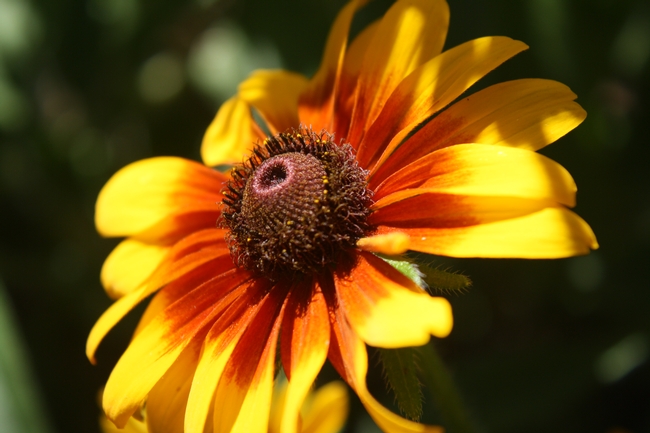
photo by Jennifer Baumbach


